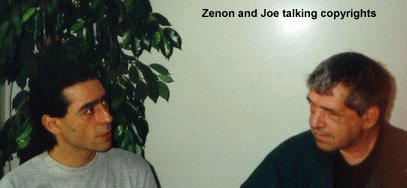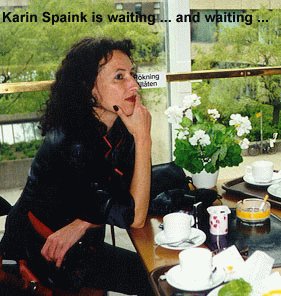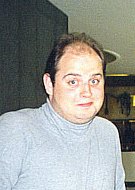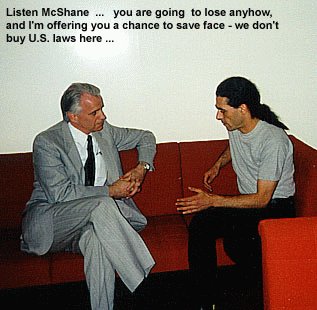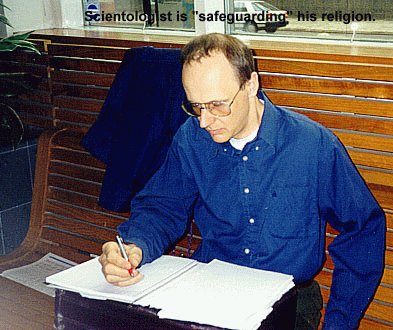[Verschenen in De Morgen.]

Training isn’t a game, staat er op de rug van zijn t-shirt. De man staat met zijn armen wijdbeens. Hij kan ook niet anders: onder zijn ene oksel zit een holster met pistool en onder de andere twee handboeien aan een leren houder, dat verwringt je postuur nogal. Hij is lid van de Antwerpse divisie van de gendarmerie. Allemaal echte mannen. Allemaal uiterst zelfvoldaan, ten volle overtuigd van hun importantie, hun nut, hun recht, hun gelijk; en vooral: van hun macht en onze machteloosheid. In een zijkamertje schopt een gendarme mijn geliefde en ik hoor hem schreeuwen. Training mag dan geen spelletje zijn maar slaan is hier een geliefde sport, zoveel is inmiddels al duidelijk.
Journalisten die over persoonlijke ervaringen schrijven, bevinden zich in een lastig parket: het is dan zowel moeilijk om je objectiviteit te bewaren als om te voorkomen dat je lezers om die reden zelf afstand gaan inbouwen. Gelukkig ben ik geen journalist maar essayist en schrijfster, en hoef ik niet objectief te zijn. Een schrijfster bovendien die er heilig in gelooft dat woorden bescherming bieden en verdedigd dienen te worden. En juist omdat mijn lief en ik alletwee vrijuit spraken, werden we gearresteerd.

Een uur eerder. We zitten in de trein naar Antwerpen, op reis naar het theaterfestival te Gent; ik zal daar de volgende dag spreken. Vanuit een ooghoek zie ik een korte gedrongen man in colbert ons voorbij lopen. ‘Vast op weg naar het toilet,’ denkt iets in mijn achterhoofd. Even later zie ik diezelfde man aan het eind van de coupé staan, naast een bankje waar twee Noordafrikaanse jongens zitten. Hij geeft ze hun paspoorten terug en gebaart dat hij de jas die naast het raam hangt, wil hebben. Ze geven hem die zonder dralen. De man doorzoekt de jas. Ah, de grenscontrole, begrijp ik, en ik schud meewarig mijn hoofd. Een bomvolle rookcoupé en wie kiezen ze uit om te controleren? Juist, de enige twee aanwezige Marokkanen.
Ik maak Zenon attent op de scène. De houding van de man is — vreemd. Hij heeft zich groot en breed gemaakt, zijn armen liggen massief op de stoelleuningen aan weerszijden van de jongens. Hij leunt over ze heen en blokkeert ze de weg. Dan gebaart hij kort: “meekomen!” De jongens stommelen overeind, een tweede man voegt zich bij het gezelschap en gevieren verdwijnen ze naar het tussenruimte van de wagon, waar de deuren en de wc’s zich bevinden.
“Kom, we gaan erbij staan, ik vertrouw het niet,” zegt Zenon.
We lopen naar de tussenruimte en steken er een sigaret op. De twee gendarmes fouilleren de jongens. Ze hebben tot nu toe niets gevonden. De korte gedrongen man grijpt een van de twee jongens uitgebreid in het kruis en voelt daar minutenlang. Knijpt in z’n linkerbal. Knijpt in z’n rechterbal. Knijpt in z’n penis. Verschuift het zaakje en begint overnieuw te knijpen. De jongen blikt in de verte en doet vreselijk zijn best er niet te zijn. Hij geneert zich dood. Het duurt erg lang.
“Afgaande op hoe lang dat kruisonderzoek duurt ga je geloven dat die agent er plezier in schept,” zeg ik tegen Zenon, “‘t is vast een onderdrukte homoseksueel. Lijkt me fijn werk, bij de gendarme, als crypto-homo.”
“Oh, maar hier wordt de grote misdaad bestreden,” corrigeert Zenon. “Het is wel duidelijk waarom ze juist deze twee knulletjes eruit visten. Onmiskenbaar zware misdadigers. Een grote vangst!”
Ik beaam dat. “Je homoseksualiteit kunnen uitleven en nog held worden ook. Geweldig vak.”
De kortharige collega van de klotenknijper kijkt ons boos aan. Onze aanwezigheid stelden ze al niet op prijs – die verhindert immers dat ze vrij spel hebben – maar onze opmerkingen kan hij nog minder waarderen. We kijken niet terug. De klotenknijper, die nog steeds niets heeft gevonden, duwt de jongen nu de wc in en gebiedt hem zijn broek te laten zakken; de wc-deur houdt hij open en zelf blijft hij buiten staan. In die wc sterft een jongen duizend doden van schaamte.
“Zonder concrete verdenking iemand aanhouden en fouilleren mag helemaal niet,” zeg ik. “Maar ja, Marokkaans zijn is natuurlijk verdenking genoeg.”
“Je kunt wel zien waar we zijn,” zegt Zenon. “Dutroux-land. Vooroordelen, corruptie, en ondertussen de verkeerden pakken.”
De ogen van de kortharige vernauwen zich. Ik aarzel even. Dutroux, dat is een nationale wonde, daar wrijf je geen zout in alleen om een punt te scoren. Maar Zenon heeft gelijk, bedenk ik twee tellen later. Het is precies dit kleinzielige gedrag, hun zelfvoldaanheid, het gemak waarmee ze hun bevoegdheden overtreden, zichzelf onaantastbaar achten, de verachting waarmee ze de wet schenden en zich vergrijpen aan deze twee Marokkanen, die de zaak Dutroux mogelijk maakte. Dutroux kon doen wat hij wilde door het gebrek aan verantwoordelijkheidsbesef van een aantal mensen. Hier staan er twee van.
We zwijgen een tijdlang en kijken alleen maar. De trein rijdt Antwerpen binnen. We stappen uit. Vijftig meter verder op het perron voegt de klotenknijper zich plotseling bij ons.
“Meekomen, jullie,” zegt hij, “jullie zijn gearresteerd.”
Het verdrag van Schengen, vrij verkeer van personen tussen lidstaten, arrestaties die alleen na het constateren van overtredingen of op grond van concrete aanwijzingen mogen plaatsvinden, dat alles doet absoluut niet ter zake.
“Op welke grond?” vraagt Zenon, alleen om de man tot een antwoord te dwingen.
“Dat merk je wel. Meekomen,” snauwt Klotenknijper. Natuurlijk kan hij niet zeggen waarom. De reden voor onze arrestatie is duidelijk, maar allesbehalve legaal. Klotenknijper en Korthaar stelden er geen prijs op dat we onszelf getuigen maakten van hoe ze de twee Marokkanen trachtten te intimideren, en daarmee erger voorkwamen; ook ons commentaar smeekte om wraak.
“Ik zal erop staan dat u alles via de regels doet,” zegt Zenon, meer om te laten merken dat we volstrekt niet onder de indruk zijn dan in de hoop dat Klotenknijper zich laat afschrikken door de gedachte aan al dat papierwerk. Klotenknijper zwijgt. Wij lopen op ons gemak mee.
In de arrestantenzaal van het Antwerpse Centraal Station zien we, buiten zes andere arrestanten – niemand ouder dan twintig, allemaal heel gelaten – de twee Noordafrikaanse jochies weer. Ze zitten er stilletjes en timide bij. Hun papieren waren in orde, er was niets gevonden, en toch moesten ze mee. Later wordt er niet eens een proces-verbaal opgemaakt van hun arrestatie en mogen ze zomaar weg.
Klotenknijper wil ondertussen Zenons papieren zien. Die zijn uiteraard in orde. Dan moet hij gefouilleerd worden. Jas uit, gilet uit. Ik kijk oplettend toe. Of ik me wil verwijderen, zegt Klotenknijper geërgerd. Huh? Hoezo mezelf verwijderen? Ik was toch gearresteerd? Klotenknijper wil niet dat ik zie wat hij met Zenon doet, dat blijkt belangrijker dan mijn arrestatie. Ik weiger verderop te gaan zitten. Zenon zegt hij eist dat ik aanwezig ben – na een onwettelijke arrestatie kun je immers alles verwachten – waarop Klotenknijper implodeert.
Je kunt dat zien aan hoe zijn spieren zich verstrakken, aan hoe zijn ogen donkerder worden, aan hoe zijn lichaam zich samenbalt. “Meekomen jij!” snauwt hij weer (zijn vocabulaire is nogal beperkt) en hij sleurt Zenon aan z’n bovenarm langs de tafels, door het gangpad, langs de lege tafeltjes met oude typemachines waar geen proces-verbaal wordt opgemaakt, naar een zijkamertje achterin de zaal, en uit heel Klotenknijpers houding spreekt wat er te gebeuren staat: Zenon gaat zometeen klappen krijgen. Het is slechts een kwestie van het juiste excuus vinden.
Het is evident dat Klotenknijper gaat slaan. Iedereen weet het, Klotenknijper weet het, Zenon weet het, ik weet het, de andere arrestanten weten het. De klappen die gaan vallen hangen tastbaar en dik in de lucht. Niettemin besteedt geen van de aanwezige officieren er aandacht aan; niemand vertrekt een spier. Ze gaan onverstoord door met wat ze aan het doen waren. De routine wordt niet doorbroken. En ineens snap ik het: dit is de routine.
De vouwwand van het zijkamertje gaat dicht. Er lopen meer manschappen het zijkamertje in, waarvan één in uniform. Korthaar is klaar met het onderzoeken van Zenons jas en vest en maakt aanstalten eveneens naar het kamertje te lopen. “U vergeet zijn tas,” zeg ik poeslief, en reik hem die aan. Korthaar pakt de tas met een vuile blik van me aan en schuift ‘m ongeopend terzijde. Hij is helemaal niet geïnteresseerd in Zenons spullen, uitsluitend in wraak, dat weten we allebei. Ik hoor gestommel van achter de vouwwand.
Na een kwartier wordt Zenon uit het zijkamertje geleid. Hij moet op een andere bank gaan zitten, ver weg, en gebaart vandaar af naar me wat ik allang wist. Ja, geslagen. Geschopt ook. Hij lag op de grond. Voet op zijn borst. Voet op zijn keel. Door twee van de drie mannen. En hij staat thans onder justitieel arrest in plaats van politioneel. Op welke gronden weigerden ze – hoe voorspelbaar onderhand – te zeggen, maar inmiddels is duidelijk dat de grond voor het eerste arrest ‘ordeverstoring’ zou zijn geweest. Dat ik desnoods alleen moet doorreizen naar Gent, gebaart Zenon, en hoewel dat als verraad voelt weet ik dat hij gelijk heeft. In de buitenwereld kan ik meer voor hem doen dan hier.

Later hoor ik wat er precies gebeurd was.
“Riem afdoen,” had Klotenknijper gezegd. Zenon had geantwoord dat hij daar niet over piekerde en dat Klotenknijper dat zelf maar moest doen: een onwettelijke arrestatie was meer dan genoeg, hij weigerde daarenboven mee te werken aan een onwettelijke fouillering. Klotenknijper had ostentatief gezucht en had Zenons riem eigenhandig afgedaan. “Broek omlaag,” had Klotenknijper daarna gezegd, en Zenon had geantwoord dat Klotenknijper dat zelf maar moest doen. Klotenknijper had ostentatief gezucht en bevond zich een halve minuut later met zijn gezicht op luttele centimeters afstand van Zenons naakte geslacht. Zenon trok z’n broek, na om permissie te hebben gevraagd, weer omhoog. “Schoenen uit,” had Klotenknijper daarna gezegd, en Zenon had geantwoord dat Klotenknijper dat zelf maar moest doen. “Schoenen uit,” had Klotenknijper gebriest, en Zenon weigerde opnieuw, vriendelijk doch beslist, en hief zijn been zodat Klotenknijper bij zijn veters kon. “Als je nu niet onmiddellijk je schoenen uitdoet lig je binnen de kortste keren op de grond,” had Uniform daarop gedreigd. “Die moeite kan ik u besparen,” zei Zenon, en ging onderwijl uit eigener beweging liggen. Hij stak zijn voet bevallig omhoog – bovenbeen loodrecht de lucht in, onderbeen haaks erop, voet gestrekt – om Klotenknijper van dienst te zijn. Ballerina dancing a tight rope.
Klotenknijper kon eigenlijk niet meer weigeren. Eerder had hij Zenons riem al afgedaan en zijn broek naar beneden gesjord. Het ergste had hij al geaccepteerd: hij had met zijn gezicht pal op kruishoogte gezeten en de warme geur van Zenons genitaliën moeten inademen. Nu terugdeinzen kon niet meer, maar opnieuw toegeven wilde hij koste wat kost voorkomen: hij achtte zichzelf al te veel vernederd, maar Zenon met schoenen aan wegsturen kon hij zich al evenmin permitteren. Zich voor dit dilemma gesteld ziend, koos hij de simpele oplossing: Klotenknijper werd ziedend.
“Overeind komen jij,” brieste hij. Zenon ging weer staan. Iemand – het kan Klotenknijper zijn geweest, het kan Uniform zijn geweest, maar het was niet de stil toekijkende collega – sloeg Zenon met de vuist op het gezicht. Hij werd op de grond gegooid en iemand sjorde een schoen los, daarna eiste Klotenknijper dat Zenon de tweede schoen uitdeed.
Zenon is niet geneigd tot het compromis; hij weigerde. Hij werd overeind gesleurd en weer neergegooid; Uniform zette zijn voet op Zenons keel om hem tegen te houden (alsof hij zich eerder anders dan uitsluitend verbaal verweerd had), Klotenknijper trok met geweld aan de tweede schoen terwijl hij zichzelf in balans hield en kracht verzamelde door zich met een voet af te zetten op Zenons borst. Klotenknijper was te stupide, of te boos, om eerst de schoenveter los te maken zodat de procedure nogal tijdrovend was; al die tijd trapte zijn voet met verve op Zenons ribben. Daarna werd de methode herhaald teneinde de ontschoeide voeten van hun sokken te ontdoen. De derde officier keek kalmpjes toe.
Zonder zich te verweren bleef Zenon liggen; hij wist dat elke beweging zijnerzijds als excuus zou worden aangegrepen om hem verrot te trappen, en later zouden ze zeggen dat hij zich had verzet. Het enige dat hij deed was ee©nmaal roepen, deels voor mij, deels om de drie te waarschuwen dat hun daden niet binnen dit zijkamertje zouden blijven: “Ze trappen me!”
Uniform trok Zenon aan zijn haren overeind – net niet hoog genoeg zodat hij kon staan, net niet laag genoeg zodat hij steun kon vinden op zijn knieën – en schudde hem aan zijn haar heen en weer, hem onderwijl op borst en gezicht slaand. Daarna gooide hij hem weer op de grond. Zenon bleef een seconde liggen, keek daarna glimlachend omhoog, recht in het gezicht van Klotenknijper, en zei: “Dank u wel. Kan ik nu mijn schoenen weer aandoen?”
Niet dat ze ondertussen zijn schoenen of sokken op drugs hadden onderzocht, maar daar ging het inderdaad niet om. “Je staat onder justitieel arrest,” had Klotenknijper geantwoord, “en je schoenen kun je aandoen.” “Mijn riem ook?” vroeg Zenon, terwijl hij voor de zekerheid bleef liggen. Als hij zelf zijn riem had gepakt waren ze op zijn hand gaan staan, wist hij. Nu hij het vroeg, kon Klotenknijper alleen maar “och ja…” brommen. Ach. Hij had zich toch al uitgeleefd.
Zenon verzamelde zijn kleding en werd daarna naar het verre bankje geleid. In vijftien minuten kun je iemand flink schoppen, maar hoe erg wist ik toen nog niet. We bleven gewoon maar welgemoed naar elkaar kijken, hij vanaf zijn plek, ik vanaf de mijne. Ons kregen ze er niet onder met intimidatie: dat evident maken was veel belangrijker dan al het andere.

Er komt een vrouwelijke agent de zaal binnen. Denkelijk is die er voor mij bijgehaald; mannen mogen vrouwen immers niet fouilleren en in dit katholieke land is dat vermoedelijk een regel waar zelfs deze gendarme zich aan houdt. Ze gaat echter met de enige andere arrestante de zijkamer in. Ze zijn binnen drie minuten klaar; daarna vertrekt de agente. Tot op zekere hoogte ben ik verontwaardigd. Ze moeten inderdaad Zenon hebben – alsof ik niet even vals was, alsof ik minder serieus te nemen ben dan hij, makkelijker te intimideren zou zijn. Ze zijn corrupt, en verdomme nog seksistisch ook.
Korthaar komt terug met mijn paspoort. Klotenknijper voegt zich bij hem en samen onderzoeken ze eindelijk Zenons tas. Ze treffen een boek met mijn naam en portret erop en bekijken dat aandachtig.
“Ja, jullie hebben pech,” zeg ik liefjes glimlachend. “Maar dat kan de beste overkomen, nietwaar?”
Ze trekken zich terug.
Vijf minuten later mag Zenon ineens van het strafbankje af en zegt Klotenknijper ons dat we vrijgelaten zijn. Er is geen proces-verbaal opgemaakt, alleen onze namen en paspoortnummers zijn genoteerd. Wat een boek al niet kan bewerkstelligen.
“En dat justitiële arrest?” vraagt Zenon. De ironie druipt van zijn stem af.
Klotenknijper wuift met zijn hand.
“Ach,” zeg ik schouderophalend tegen Zenon, “dat was toch uitsluitend intimidatie. Omdat we ze op de vingers keken en ze daar niet van houden.”
Klotenknijper keert zich naar me om. “Dat is niet waarom u gearresteerd werd,” zegt hij.
Waarom dan wel, wil ik van hem weten. Was hij ons eerder niet gewoon voorbijgelopen, in die coupé? Had onze aanhouding werkelijk niets te maken met het feit dat we ze de kans ontnamen die twee jochies nog meer te intimideren? Of dat we dingen zeiden die ze niet zinden?
“U mag ervan denken wat u wilt,” zegt Klotenknijper, “dit is een vrij land. En anders dient u maar een klacht in.”
Een vrij land, jawel. Zojuist nog had hij bewezen hoe onwaar dat was: hij had er straf op gesteld indien je je niet bang laat maken, je mond niet houdt of vindt dat de politie zich heeft te gedragen en zich aan regels dient te houden. Sommige ambtenaren haten dat, ze menen dat zijzelf de dienst mogen uitmaken. En een klacht indienen? De Antwerpse Rijkswacht die wij hier hadden gezien had zichzelf collectief boven de wet gesteld. Klotenknijper schopte, Uniform sloeg, Collega stond erbij en Korthaar had er dolgraag zijn deel aan toegevoegd; de anderen hoorden het en wisten het. Niemand deed iets. Ze achtten dit stuk voor stuk normaal. Dit hoorde zo, vonden ze, dit was hun recht. Bij een in te stellen onderzoek zouden ze elkaar de hand boven het hoofd houden en elkaars rug dekken. In zulke gevallen helpen alleen publieke aanklachten.
Het prettige is dat ik dat kan, ik ben immers schrijfster. Het erge is dat die twee Marokkaantjes minder vertrouwd zijn met woorden, geen contacten en geen forum hebben: als de gendarme mijn lief niet had geschopt zou hun verhaal nooit De Morgen hebben gehaald. Het wrange is dat deze publieke aanklacht er waarschijnlijk alleen voor zorgt dat hun morele corruptie zich verhevigt. De Rijkswacht zal voorzichtiger worden met mensen als wij en zich met nog meer verve storten op kleine Marokkaantjes, die immers zonder gevaar voor repercussies te pakken zijn.
Het meest tragische is echter dat Klotenknijper bewees dat die opmerking over Dutroux-land uiterst pijnlijk doch gefundeerd was.

De echte naam van Klotenknijper is mij te bevragen, evenals als Zenons t-shirt met daarop zijn voetafdrukken. Zenon heeft een gebroken rib.
[Dit artikel leidde tot veel commotie – zie voor de stukken in de pers, Chronologie Rijkswacht – en een rechtszaak die Klotenknijper tegen ons aanspande, die we uiteindelijk verloren. Van de klacht die we bij Comité P. hebben ingediend, hebben we – ondanks verhoren – niets meer gehoord.]
